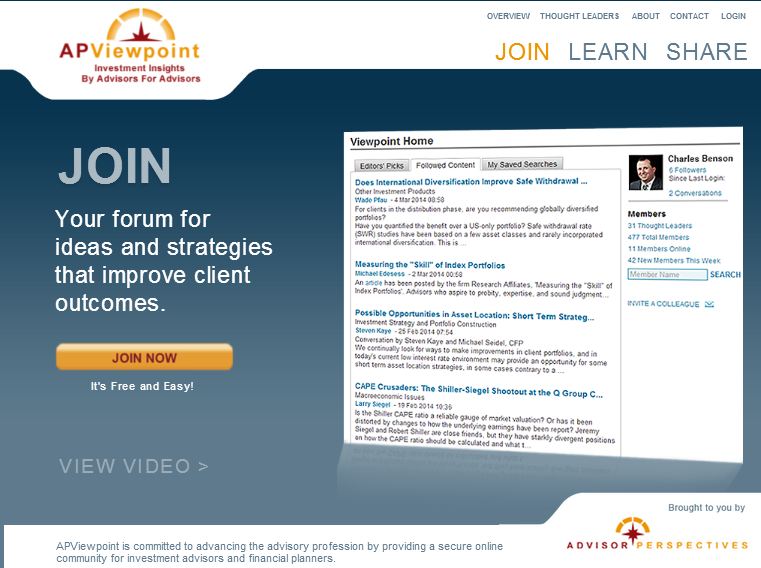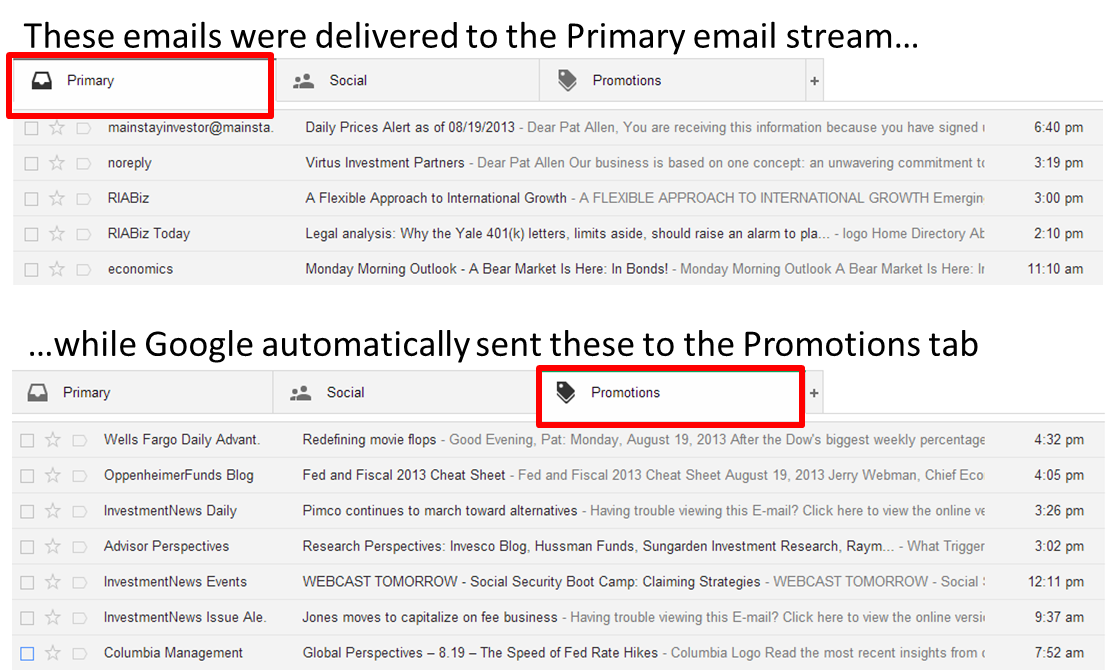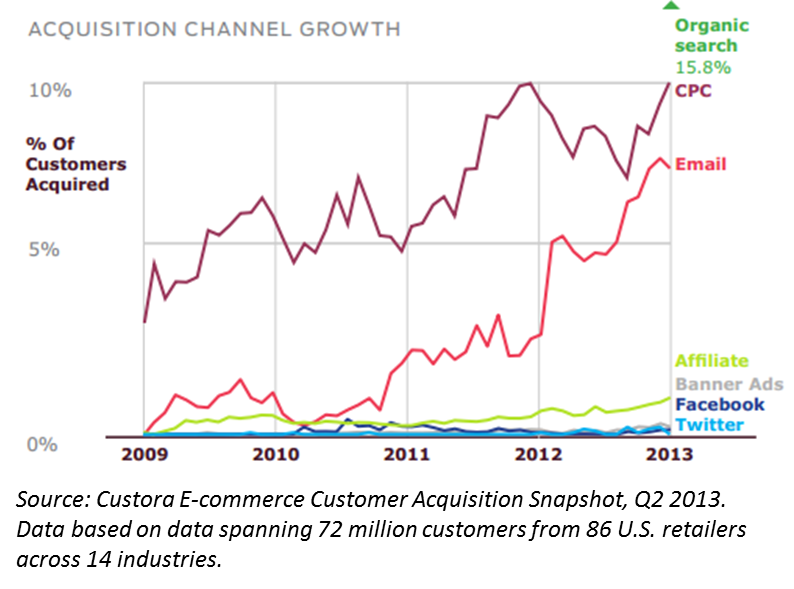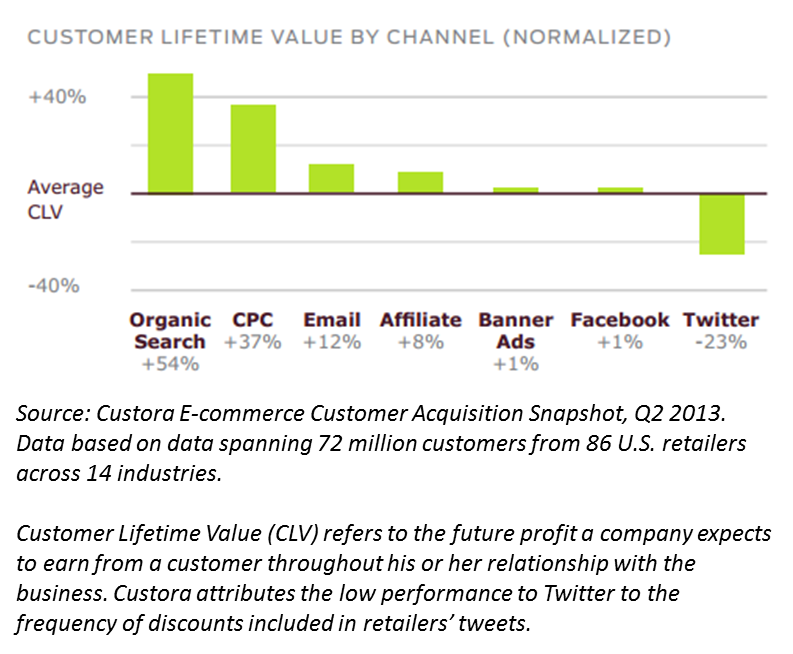Email, Banner Ads, Webinars And A New Kind Of Hangout For Independent Advisors
/ TweetAdvisor Perspectives, the Website that no asset management marketer can ignore if he or she is interested in better understanding independent financial advisors/RIAs, is making news this week with two items of interest.
Online Marketing Campaigns
First are a few results from Advisor Perspectives’ recent survey of advisors on their response to fund company email, banner ads and Webinars. This follows a comparable survey last year, the results of which were reported on in a whitepaper and blog post, and I offered my take on them, too. This year, Director of Marketing Jeff Briskin says the plan is to distribute the insights in an ongoing campaign throughout the year.
Independent advisors are no pushovers, as most mutual fund or exchange-traded fund (ETF) marketers already know. But, the first of the survey results, made available in a two-page whitepaper emailed this week, confirm that.
Less than one-third of advisors will respond to a Webinar invitation, according to the survey. And, those who do say that a marquee name (speaker or sponsor) is the top way to entice them. Product-focused content? It's the least interesting Webinar "hook" you can offer.
Banner advertising has limited appeal. The fund company name or reputation matters most to one-quarter of survey respondents (the largest percentage of those responding to banner ad questions!).
But even if you work for a little known firm and don’t have the wherewithal to book a big-time Webinar speaker, there’s hope for you in the survey results about what it takes to get an email opened. Investment whitepapers/research and other thought leadership deliverables sit at the top of the chart and offer the greatest potential as a gateway to show advisors a little bit more about your firm and what you know.
 In fact, most investment firm marketers make the assumption that “marketing” to independent advisors/RIAs requires just fresh, solid ideas versus bright, shiny other stuff.
In fact, most investment firm marketers make the assumption that “marketing” to independent advisors/RIAs requires just fresh, solid ideas versus bright, shiny other stuff.
A Forum Of Insights: APViewpoint
To facilitate the exchange of ideas between advisors—something that doesn’t take place on AdvisorPerspectives.com—the mothership tomorrow is launching a new site: APViewpoint. Update: Advisor Perspectives tells me that they've delayed the launch, it should be sometime in May.
There are LinkedIn groups and other advisor communities online, but this site is different in a few ways, according to Briskin. There's nothing unique about the structure or its capabilities, the design isn't flashy. Instead, Advisor Perspectives is hoping that the depth of participation and debate will distinguish the forum.
Thirty thought leaders, including Bob Veres, Harold Evensky and Michael Kitces, have committed to take part. Registration is being monitored to assure that only advisors sign up. To date, 500 advisors have been admitted during the beta process. An email invitation goes out to Advisor Perspectives’ list of 400,000 names starting next week.
“The biggest selling point is that this will be a community of elite advisors,” Briskin says. "These are advisors who are the cream of the crop, people who interested in learning." Advisor Perspectives readers tend to be "more sophisticated" and have higher AUMs, he says.
This video provides additional detail on the forum.
Briskin gave me guest access and, sure enough, there is a lot of substantive debate and exchange going on in APViewpoint. Responses to the conversations I scanned were longish, reasoned, almost academic.
As of yesterday afternoon, the most commented on post was about using bond ladders for retirement income. A post seeking feedback on some retirement research published by GMO was the most viewed. In the course of one conversation, an advisor commented on the “packaging and marketing attributes” of the "JP Morgan Dynamic Retirement Income Withdrawal Strategy/Breaking the 4% Rule" executive summary. He'd liked it and uploaded the Adobe Acrobat file.
You can see how this could develop into a fascinating way to follow hot buttons and track what’s resonating with advisors.
Fund Companies Will Have To Wait
...Except that for now participation by fund company employees won’t be allowed. Here’s where the conversation with Briskin turned awkward.
“We want the site to live and breathe and blossom,” Briskin says. Advisor Perspectives intends to provide a "haven" for advisors who want to be free to criticize fund companies (and I did spot at least one post drilling into a firm’s performance) and not need to navigate their way through product pitches.
If you’ve spent any time in standard-issue LinkedIn groups, you know what Briskin means. In its early state, the forum is refreshingly free of self-promotional posts masquerading as engagement.
Hope you don’t mind me using space in this blog to describe a community that would not have you as a member. The restriction will lift soon enough.

Whatever, the offer will have to work for both sides.
The business of reaching financial advisors online was fragmented when I wrote about it four years ago and it’s even more so now. APViewpoint has a long road ahead not just to build up its registrations but to drive good word-of-mouth among members and repeat visits. Social media will go only so far in raising visibility—promotional posts will link to a registration page. And, search can’t help a site whose content is behind a wall.
The more active users (defined by vibrant, helpful conversations, subsequent log-ins, posting, following, etc.) the more appealing this will be as a forum to get in front of, on a paid basis, or even—assuming fund companies and their Sales staff can promise to behave—in read-only mode.
I wish Advisor Perspectives team success with this. By the way, the Advisor Perspectives newsletter will start to include excerpts of what’s being discussed in APViewpoint. For the time being, that will be one way to keep an eye on what’s going on in there. It has a brand new Twitter account to follow, too: @APViewpoint.









